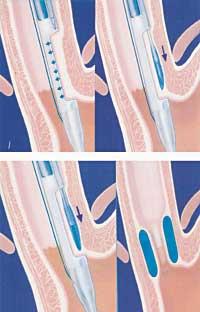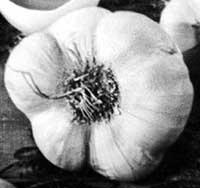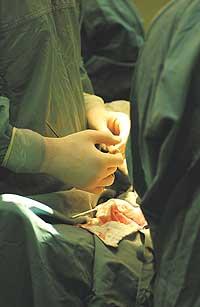New disheartening technique
2004/12/01 Kortabitarte Egiguren, Irati - Elhuyar Zientzia Iturria: Elhuyar aldizkaria

Gatekeeper is a new medical technique to eliminate chronic infarction. It has been used in Europe for two years and in Euskal Herria it has been tested recently for the first time. The first two operations were carried out in Policlínica Gipuzkoa (Donostia).
The disease called heart or chronic gastroesophageal reflux is widespread among us. According to Juan Ignacio Arenas, Chief of the Digestive System Service of Policlínica Gipuzkoa, seven out of ten citizens suffer from chronic heart disease. In Gipuzkoa, for example, there are 50,000 people.
The burning occurs when gastric acid rises, so the esophagus laments. The causes of burning are those related to hiatal hernia. Obesity or eating certain foods, such as fats, can cause hiatal hernia. Therefore, overeating, eating fatty foods, drinking alcohol and, in general, not eating well, usually produces burning.
To prevent the disease, experts recommend avoiding coffee, alcohol, tobacco and soft drinks. They also advise eating food slowly, in small amounts and always in similar hours. And how not, avoid as much as possible irritating foods for yourself (garlic, peppers, onion...).
To date there were two anti-tooth solutions: pharmaceutical treatment and surgical intervention. The treatment between the two is Gatekeeper.
This new technique was developed by the Dutch physician Gunens. Dr. Enfens is a member of the Academy Medical Center in Amsterdam. There, in Amsterdam, Dr. Arenas studied the new technique.
Reversible operation

This is a simple, fast and simple intervention. In addition, it has a characteristic that the difference from other endoscopic techniques is reversible.
A small tube is inserted into the first esophagus by endoscopy. Through this tube a small puncture is performed under the esophagus mucosa and a polymer is inserted. This polymer is a fine gel, the same that is used to harden intervertebral discs, which is inflated when wet with serum. Its size is a few centimeters. This dilated polymer performs the function of a valve. Prevents gastric acid from rising into the esophagus.
This prevents irritation of the esophagus. Operations carried out to date in Europe have had an average duration of 26 minutes. The interventions at Policlínica Gipuzkoa were 33 minutes, somewhat longer than normal, for being the first time.
Doctors will wait at least six months to confirm the effectiveness of the first interventions. This is when the first postoperative studies are performed on patients. In any case, there is no need to worry. European results indicate that there is only a risk of failure in this technique of 25%, when the inserted polymer is removed. That's good. In addition, it usually has no side effects. The results show this.
In the Basque Country, the operation is carried out only in the private hospital of Policlínica Gipuzkoa. The public health service of the Basque Country does not currently offer this endoscopic technique of chronic heart eradication. Neither more nor less.
Substitute for complex interventions and medicinesTo date there were two anti-cardiac solutions, surgical intervention and drug treatment. In the first case there are two types of surgical interventions. One is the one that wrinkles or flexes the esophagus with a complex gadget and the other that sews the esophagus muscle. How hard! In short, in both cases the goal is the same, that is, gastric acid is prevented from climbing into the esophagus. Unfortunately, these two operations do not give good results in all cases, and also leave traces for life. After the operation, they have trouble swallowing food. The second solution without surgery is pharmaceutical treatment. Before applying the quail, the medicines were taken daily. After this operation, 75% of patients have not had to take medicine. |

Gai honi buruzko eduki gehiago
Elhuyarrek garatutako teknologia





